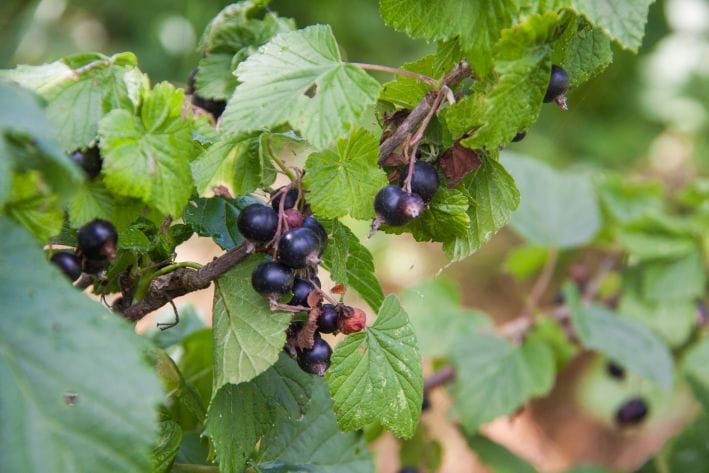Black currant is valued for its tasty and healthy berries.
To achieve their large size, it is important to provide the bushes with the right fertilizers.
Fertilizers should meet the plant's nutrient needs and maintain its health throughout the season.

The role of fertilizers in the formation of large berries
Blackcurrants require balanced nutrition to form large berries. Nutrients stimulate shoot growth, flower bud formation, and fruit formation.
Without fertilizing, the bushes can deplete the soil, causing the berries to become small and sour. The main components that the plant needs are nitrogen, phosphorus, and potassium. Magnesium, calcium, and microelements such as iron and boron are also important.
Spring fertilizing for bush growth
In spring, when plants awaken, it is important to stimulate their development. At this time, it is recommended to use nitrogen fertilizers. Urea or ammonium nitrate saturate the soil with nitrogen, accelerating the growth of shoots and leaves.
To distribute fertilizers evenly, they are applied to the tree trunk circle, after loosening the soil. Additionally, you can use organic fertilizers, such as mullein or chicken manure infusion.
Fertilizing during flowering period
When the bushes begin to bloom, the need for phosphorus and potassium increases. These elements help to lay flowers and future berries. Superphosphate and potassium sulfate are suitable for this.
Fertilizer solutions can be used for root and foliar application. Foliar feeding is carried out in the evening to avoid leaf burns.
Summer feeding for large berries
During the period of berry formation, the plant especially needs potassium. This element enhances the filling of fruits, making them large and sweet.
Wood ash is well suited; it can be scattered under the bushes or used to make an infusion.
Potassium-magnesium fertilizers are used to increase the sugar content in berries. Organic fertilizers, such as herbal infusions, enrich the soil with microelements.
Autumn feeding to prepare for winter
After harvesting, the bushes need to be restored. In the fall, phosphorus and potassium fertilizers are applied, which strengthen the root system and lay the foundation for the next harvest.
Organic fertilizers, such as humus or compost, enrich the soil and improve its structure. Autumn fertilizing also helps the plant prepare for the winter cold.
Organic fertilizers for black currants
Organic matter is a valuable source of nutrients. Manure, humus or compost improve the structure of the soil, increase its moisture capacity and enrich it with microelements.
Infusions of herbs such as nettle or dandelion saturate the soil with nitrogen and potassium. Organic fertilizers are best applied in spring or summer so that the nutrients have time to be absorbed.
Mineral fertilizers for growth and fruiting
Mineral fertilizers are a fast and effective way of feeding. They allow you to precisely regulate the amount of necessary elements.
Ammonium nitrate and urea provide the bushes with nitrogen. Superphosphate is a source of phosphorus, and potassium salt and potassium sulfate saturate the soil with potassium.
Mineral fertilizers can be alternated with organic ones to provide the plant with all the necessary elements.
Mulching as a method of fertilizing
Mulching not only helps to retain moisture in the soil, but also serves as a source of nutrients. For this, humus, peat or compost are used.
Mulch is spread around the bushes in the spring and renewed throughout the season. As it decomposes, it gradually nourishes the plant and improves the soil composition.
Watering as an important part of fertilizing
Watering plays a key role in the absorption of fertilizers. Lack of moisture makes nutrients unavailable to the roots.
The bushes are watered regularly, especially during the period of berry formation. In hot weather, 3-5 buckets of water are poured under each bush. It is better to use settled or rainwater.
Feeding Mistakes to Avoid
Excessive fertilizers can harm the bushes. For example, too much nitrogen leads to increased growth of green mass at the expense of berries.
Mixing mineral fertilizers with different chemical compositions reduces their effectiveness. Fertilizers should be applied according to the instructions, taking into account the needs of the plant.








